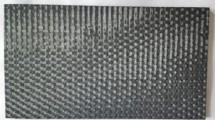The effect of the chemical composition of alloys of the Sn – Cu – Co system used as a binder for diamond abrasive tools on their structure and hardness is studied. It is shown that in the range of concentrations of the elements studied alloy structure is represented by three phases, i.e., β-Co, a solid solution of tin and cobalt in copper (Cu), and an ε (Cu3Sn) intermetallic phase. The lowest microhardness of the three phases is exhibited by β-Co, as a result of which with an increase in cobalt content alloy macrohardness decreases.




Similar content being viewed by others
References
J. Konstanty, Powder Metallurgy Diamond Tools, Elsevier, Oxford (2005).
E. G. Sokolov and A. D. Kozachenko, “RF Patent 2457935, Method for preparing an abrasive tool made from ultrahard materials,” Byull. Izobr. Polezn. Modeli, No. 22 (2012), publ. 08.10.2012.
L. G. Rosa, P. M. Amaraland J, C. Fernandes, “Experimental determination of Young’s modulus in PM metal matrices used in diamond impregnated tools for cutting hard materials,” Powder Metall., 51(1), 46 – 52 (2008).
Peng Sun, C. Andersson, Xicheng Wei, et al., “Intermetallic compound formation in Sn – Co – Cu, Sn – Ag – Cu and eutectic Sn – Cu solder joints on electroless Ni(P) immersion Au surface finish after reflow soldering,” Mater. Sci. Eng: B, 135(2), 134 – 140 (2006).
T. H. Chuang, C. C. Jain, and H. M. Wu, “Intermetallic reactions in Sn – 0.4Co – 0.7Cu solder BGA packages with an ENIG surface finish,” J. Electr. Mater., 37(11), 1734 – 1741 (2008).
C. Andersson, Peng Sun, and J. Liu, “Tensile properties and microstructural characterization of Sn – 0.7Cu – 0.4Co bulk solder alloy for electronics applications,” J. Alloys Compounds, 457(1 – 2), 97 – 105 (2008).
Yu-Kai Chen, Chia-Ming Hsu, Sinn-Wen Chen, et al., “Phase equilibria of Sn – Co – Cu ternary system,” Metall. Mater. Trans. A, 43(10), 3586–3595 (2012).
N. P. Lyakishev (ed.), Binary Metal System Diagram: Handbook, Vol. 2 [in Russian], Mashinostroenie, Moscow (1997).
Yu. V. Naidich, G. A. Kolesnichenko, I. A. Lavrinenko, and Ya F. Motsak, Soldering and Metallization of Ultrahard Tool Materials [in Russian], Naukova Dumka, Kiev (1977).
S. D. Shlyapin, Ultrasolidus Sintering of Powder High-Speed Steels [in Russian], GINFO MGIU, Moscow (2003).
Work was performed on equipment of the central usage center “Material science and metallurgy” with state financial support of the Russian Ministry of Science and Education (project unique identifier RFMEF159414X0007, agreement No. 14.594.21.0007).
Author information
Authors and Affiliations
Corresponding author
Additional information
Translated from Metallovedenie i Termicheskaya Obrabotka Metallov, No. 5, pp. 58 – 62, May, 2017.
Rights and permissions
About this article
Cite this article
Sokolov, E.G., Artem’ev, V.P. & Voronova, M.I. Study of the Structure and Hardness of Alloys of the Sn – Cu – Co System Used as Diamond Abrasive Tool Binders. Met Sci Heat Treat 59, 321–324 (2017). https://doi.org/10.1007/s11041-017-0150-9
Published:
Issue Date:
DOI: https://doi.org/10.1007/s11041-017-0150-9




